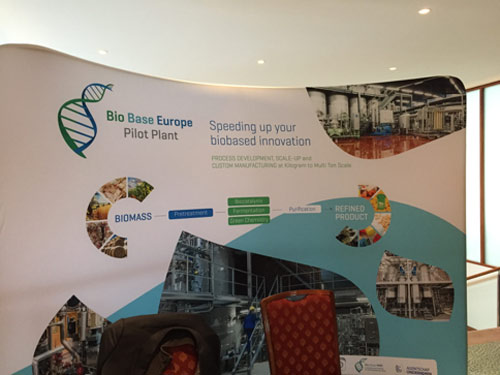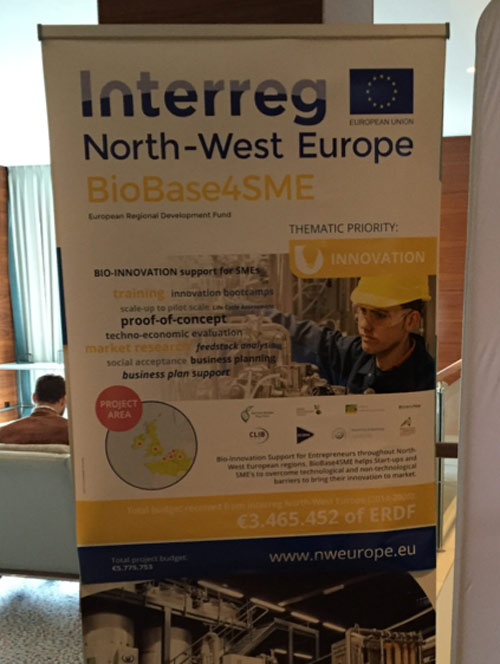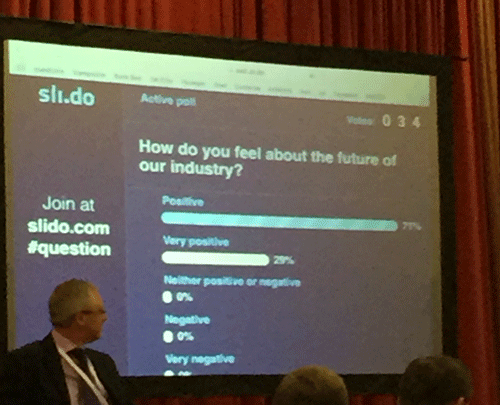The Future of Bio-based Materials: The Road to Successful and Sustainable Commercialization
Highlights of the inaugural European Bio-based World Meeting in Amsterdam
The Bio-based World meeting in Amsterdam was attended by delegates from all areas of bio-based materials on May 24th and 25th, 2016. The meeting hosted exciting presentations, round-table discussions, expert panels, networking sessions, interactive voting sessions, exhibitor clinics, and an award ceremony. Two concurrent sessions featured presentations on quantifying the value, impact, and risks of bio-based materials, how to communicate sustainability, how to successfully commercialize, and the importance of actively seeking partnerships.
A few highlights of the two-day meeting:
Small and large companies are moving toward higher bio-based content, and even looking to capture greenhouse gases like methane or CO2 into high value chemicals, which can result in an overall negative carbon footprint.
Tom Domen of Ecover/Method encourages "Bringing the Outside In".
A call from many companies to “Collaborate or Die” in the bio-based industry.
Tom Kläusli of AVO-CO2 Sends a Message We Can All Understand: Collaborate or Die
Opportunities for SMEs at the Bio-Base Europe Pilot Plant, a facility that minimizes the risk and costs of scaling-up by providing the equipment and expertise to companies wishing move to pilot phase.
Networking with Cellutech, a company that produces a material that looks and feels like Styrofoam, made out of nano cellulose.
I held Cellutech's nanocellulose 'Cellufoam"
Methods and metrics for sustainability assessment, and a call from some for standardization in methods. Life Cycle Analysis is the current standard, but can be challenging to achieve due to the complexity of the assessment.
Bio-based companies face unique challenges, including:
General confusion from the public between the terms “bio-based” (produced from rapidly renewable carbon) and “bio-degradable” (will break down with the help of natural organisms). “Bio-plastics” can refer to either.
People can be cautious when it comes to unfamiliar products. For example, a customer buying a plastic product will ask: “What function does it provide, and at what cost”. But, when buying a bio-based product, they will ask: “What function does it provide, and at what cost…AND how renewable is it…AND is it GMO…AND does it compete with food crops…AND is it recyclable…AND what’s its carbon footprint…etc. etc. etc.”
Time and time again, it has been observed by companies that customers put functionality, price, and quality first, and then will consider the sustainability of the product.
The conference finished with a live interactive poll that revealed the general feeling of the attendees:
“How do you feel about the future of our industry?”
71% felt POSITIVE. 29% felt VERY POSITIVE!
The future of bio-based materials looks good
Thank-you goes out to the organizers of the Bio-Based World meeting – it was well organized, had a wide range of dynamic presentations, and facilitated interactions through online tools and networking sessions!
More information can be found about Bio-Based World and the meeting here.
The Bio-based World meeting is coming to North America on Sept 26-27th and Jo Anne Shatkin will be a keynote speaker!



